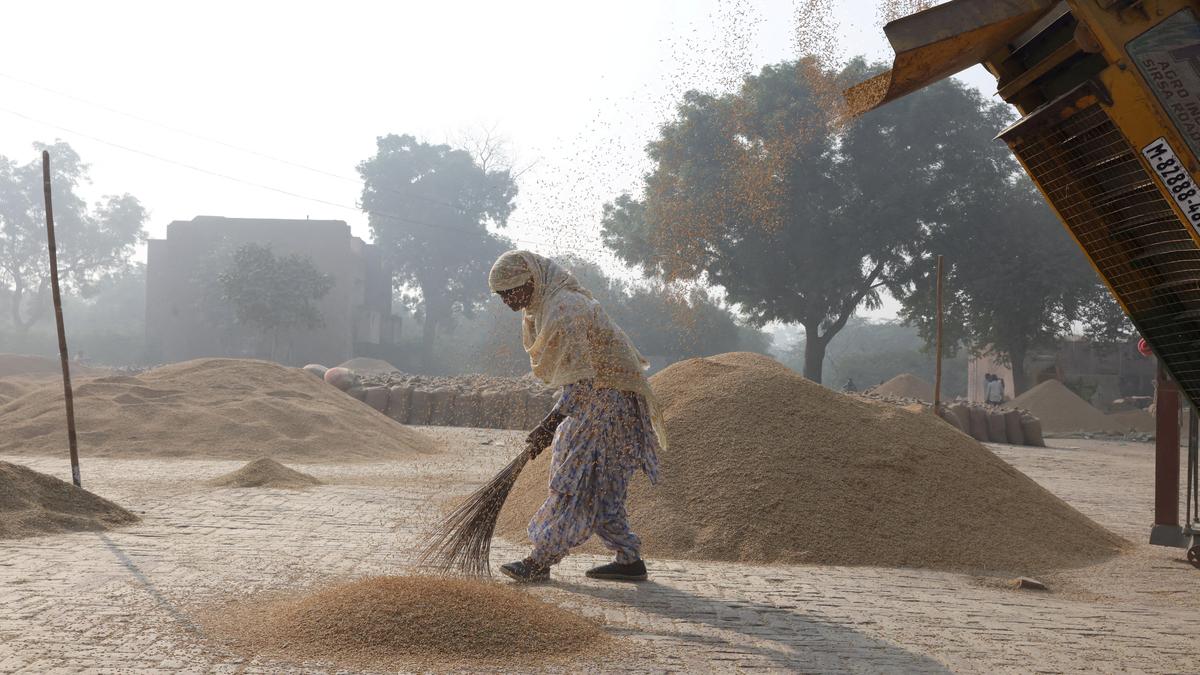What’s in today’s article?
- Why in News?
- Highlights of the “Protocol for Identification and Management of Malnutrition in Children”
- Significance of the Protocol
- What is Malnutrition?
- What is Severe Acute Malnutrition (SAM)?
Why in News?
- The Union Minister of Women and Child Development (WCD) recently launched the “Protocol for Identification and Management of Malnutrition in Children”.
- This is the first such protocol by the government, which has been put into place by the WCD Ministry in collaboration with the Ministry of Health and Family Welfare and the Ministry of Ayush.
Highlights of the “Protocol for Identification and Management of Malnutrition in Children”
- The protocol provides detailed 10-step guidelines for –
- The identification and management of children suffering from severe acute malnutrition (SAM) at the Anganwadi level, including decision-making for referral, nutritional management and follow-up care.
- The processes that needed to for a healthy weight, and
- The comprehensive norms on dietary requirements for various levels of malnutrition among children.
- After the identification of children through growth monitoring data, appetite tests will be done on all SAM children for medical complications.
- SAM children who fail the appetite test will be referred to Nutritional Rehabilitation Centres, which will also be linked to medical centres.
- The protocol also includes unique initiatives like the “Buddy mother” concept which was first used in the state of Assam.
- Under this scheme, the mother of a healthy baby guides the mother of a malnourished child at an Angandwadi centre every week.
Significance of the Protocol
- The new guidelines will check malnutrition among children, which the government is tackling through the implementation of ‘Poshan Abhiyan’.
- The identification of malnourished children and their treatment is an integral aspect of Mission Poshan 2.0 and more than 17 crore activities have taken place during the ‘poshan maah’ (nutrition month).
- The standardised protocol is significant since treatment of children with SAM was previously thought to be limited to facility-based approaches.
- This is the first time this issue would be addressed at the Anganwadi level.
- Hence, the Centre was now “strengthening the foundation’’ of the nutrition ecosystem with the development of protocols.
What is Malnutrition?
- Malnutrition refers to deficiencies, excesses or imbalances in a person’s intake of energy and/or nutrients.
- The term malnutrition covers 2 broad groups of conditions –
- Undernutrition: It includes stunting (low height for age), wasting (low weight for height), underweight (low weight for age) and micronutrient deficiencies or insufficiencies (a lack of important vitamins and minerals).
- Overweight: obesity and diet-related noncommunicable diseases (such as heart disease, stroke, diabetes, and cancer).
- In India, malnourishment in children (stunting, wasting and underweight) under 5 years has reduced as per NHFS-5 (2019-21) from 38.4% to 35.5%, 21.0% to 19.3% and 35.8% to 32.1% respectively as compared to NHFS-4 (2015-16).
- Malnutrition among women aged 15-49 years has also reduced from 22.9% to 18.7%.
What is Severe Acute Malnutrition (SAM)?
- It is defined by a very low weight for height, by visible severe wasting, or by the presence of nutritional oedema.
- In children aged 6–59 months, an arm circumference less than 110 mm is also indicative of severe acute malnutrition. At present, there are ~7.7% SAM children in India.
Q.1) What is POSHAN Abhiyaan?
POSHAN Abhiyaan (erstwhile National Nutrition Mission) was launched in 2018 to achieve improvement in nutritional status of Children from 0-6 years, Adolescent Girls, Pregnant Women and Lactating Mothers in a time bound manner.
Q.2) What is the National Family Health Survey (NFHS)?
The NFHS is an India-wide survey conducted by the Union Ministry of Health and Family Welfare, with the International Institute for Population Sciences serving as the nodal agency.
Source: Irani launches protocol to manage malnutrition in children
Last updated on January, 2026
→ Check out the latest UPSC Syllabus 2026 here.
→ Join Vajiram & Ravi’s Interview Guidance Programme for expert help to crack your final UPSC stage.
→ UPSC Mains Result 2025 is now out.
→ UPSC Notification 2026 is scheduled to be released on January 14, 2026.
→ UPSC Calendar 2026 has been released.
→ UPSC Prelims 2026 will be conducted on 24th May, 2026 & UPSC Mains 2026 will be conducted on 21st August 2026.
→ The UPSC Selection Process is of 3 stages-Prelims, Mains and Interview.
→ Prepare effectively with Vajiram & Ravi’s UPSC Prelims Test Series 2026 featuring full-length mock tests, detailed solutions, and performance analysis.
→ Enroll in Vajiram & Ravi’s UPSC Mains Test Series 2026 for structured answer writing practice, expert evaluation, and exam-oriented feedback.
→ Join Vajiram & Ravi’s Best UPSC Mentorship Program for personalized guidance, strategy planning, and one-to-one support from experienced mentors.
→ UPSC Result 2024 is released with latest UPSC Marksheet 2024. Check Now!
→ UPSC Toppers List 2024 is released now. Shakti Dubey is UPSC AIR 1 2024 Topper.
→ Also check Best UPSC Coaching in India

















